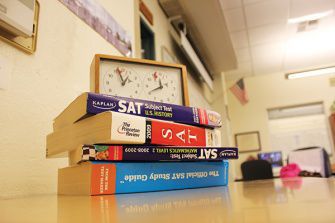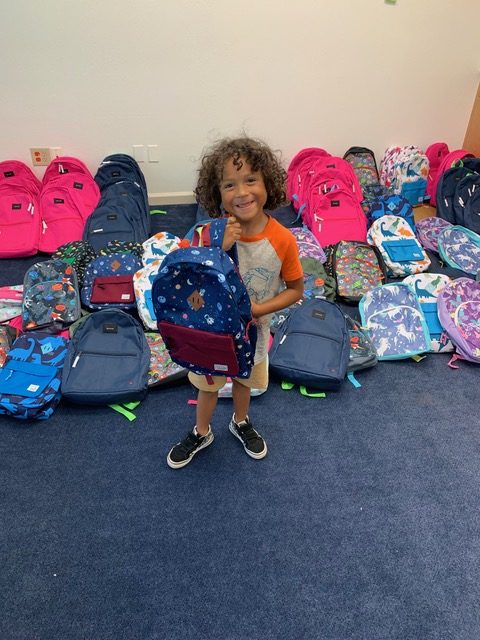Early tomorrow morning, thousands of students nationwide will take the SAT, one of the most important tests of their high school careers.
According to 2011 National Association for College Admission Counseling’s State of College Admission report one’s standardized test scores ranks third on the scale of importance in college admission, only behind grades and rigor of schedule. Yes, how you perform for four hours on a Saturday morning are nearly as important to colleges as how you perform over four years of high school.
Although nothing can replace time spent studying, what one does in the final hours before one’s test can make a difference. The Bark gives you a get ready guide for what to do in the night and morning before your test.

Night Before:
Don’t cram. “Most kids are under the false impression that they can treat standardized testing like any old test at school, which means in the 24 hours prior to the test they can cram as much into their brains as possible,” said Scott Bell, a local standardized test tutor. “If any student has been doing a normal amount of preparation for the test, there should be absolutely no need to do any last minute cramming. In fact, last minute cramming for the test just ends up raising anxiety levels.”
Sleep! The Center for Disease Control recommends that teenagers get between 8.5-9.5 hours of sleep each night. Studies have also shown that lack of sleep inhibits brain function and can impair attention, alertness, concentration, reasoning, and problem solving—all things you’ll need in order to perform well on the SAT. If you have regularly been skimping on sleep, try going to bed earlier not only the night before the test, but also a few days before in order to make up for your sleep deficit.
Get everything you’ll need together before bed. The last thing you want is to be frantically searching for your calculator. According to College Board, you’ll need your test admission ticket, a photo ID, a #2 pencil, and an approved graphing calculator. Extra pencils, erasers, and back- up calculator batteries are also recommended. Gather everything you need into a bag, so you can just grab it and go.
Make sure you know where you’re headed. None of the Tam District schools offer the SAT so you will be taking it at another location. The closest test center to Redwood is Terra Linda High, but students test all over the Bay Area. If you or the person who is driving you, has never been to the testing location, make sure you print out clear directions. The last thing you want is to miss your test because you got lost on the way there.
Morning Before:
Eat Breakfast. According to the USDA, eating breakfast helps improve math and reading standardized test scores, helps students maintain attention, and aides in performing problem-solving tasks. Bell echoes this sentiment, “The simple fact is that you are taking a test for three to five hours and you are going to have to have some type of food.”
This is not the time to start or stop drinking coffee. If you are regular coffee-drinker, foregoing your morning latte on test day may cause you to experience mild withdrawal symptoms such a headache and difficulty focusing, according to a John Hopkins study. Conversely, for those unaccustomed to caffeine, it can lead to “jitters, nervousness, upset stomach, headaches, difficulty concentrating, difficulty sleeping and frequent urination,” according to an article by the Committee on Nutrition and the Council on Sports Medicine and Fitness.
Pack a snack and water for later. You will be given several short breaks where you can eat and drink. “My recommendation is just any kind of bar, a Power bar, a Luna bar, a Snicker’s bar, a granola bar, anything that has a single wrapper that can be unfurled and eaten rather quickly,” Bell said. He also has a word of caution in regards to water. “Definitely bring water, but do not drink the entire water before the test because you are nervous and then have to go to the bathroom the whole test.”
Wear comfortable layers. Bay Area weather is famously unpredictable and there is no telling whether you room will have climate control, so be prepared for anything. Remember this is a test, not fashion show. A 2009 study published in Family and Consumer Sciences Research Journal found that students who rated their own clothing choices as comfortable did better on tests than those who did not, so wear whatever you feel you can perform best in.










